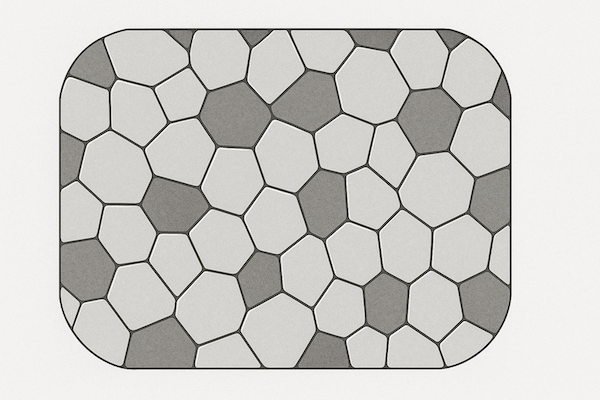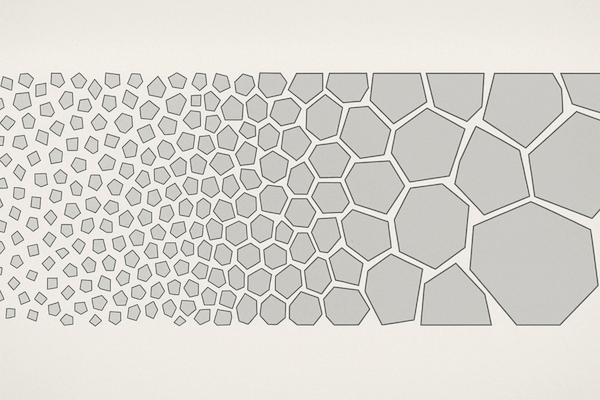
첨단 소재 및 공구 분야에서 자주 등장하는 용어 중 하나는 "입자 크기"입니다. 야금학자만 관심을 갖는 세부 사항처럼 들릴 수 있지만, 입자 크기는 광업, 기계 가공, 석유 및 가스, 정밀 제조 산업에서 사용되는 텅스텐 카바이드 공구의 성능, 강도 및 내구성에 중요한 역할을 합니다.
그렇다면 입자 크기란 무엇이고, 왜 관심을 가져야 할까요?
입자 크기가 텅스텐 카바이드 공구 성능에 미치는 영향
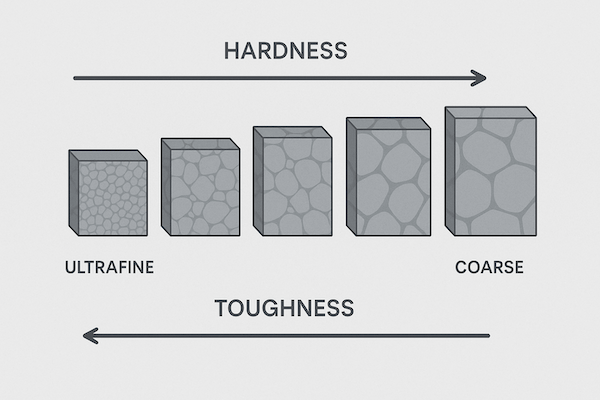
입자 크기는 재료의 기계적 특성, 특히 경도에 직접적인 영향을 미칩니다. 내마모성, 강인함, 그리고 열적 거동. 방법은 다음과 같습니다.
| 입자 크기 | 경도 | 강인함 | 내마모성 | 일반적인 응용 프로그램 |
|---|---|---|---|---|
| 초미세 | 매우 높음 | 낮은 | 우수함(정밀도 측면에서) | PCB 드릴, 마이크로 엔드밀 |
| 서브마이크론 | 높은 | 보통의 | 훌륭한 | 금속 절삭 인서트 |
| 괜찮은 | 보통의 | 좋은 | 좋은 | 일반용 가공 |
| 중간 | 균형 잡힌 | 더 나은 | 보통의 | 광산용 곡괭이, 마모 부품 |
| 조잡한 | 낮추다 | 훌륭한 | 낮추다 | 충격 도구, 중장비 드릴링 |
입자가 작을수록 경도는 높아지지만 더 부서지기 쉽습니다.
입자가 클수록 인성은 좋아지지만 경도는 낮아집니다.
카바이드 제조에서 입자 크기를 제어하는 이유는 무엇입니까?
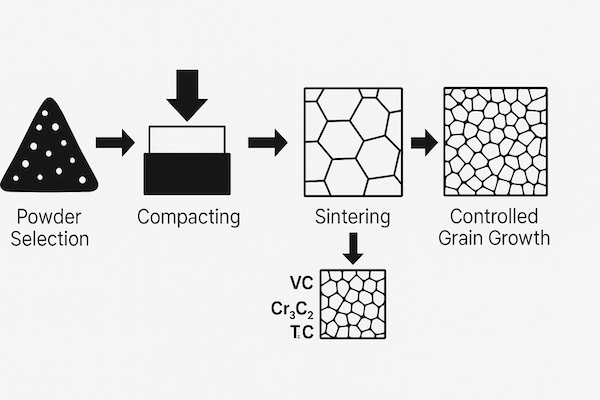
제조업체는 분말 제조 및 소결 기술을 사용하여 입자 크기를 신중하게 제어합니다. 그 이유는 다음과 같습니다.
입자 미세화로 내마모성과 날의 유지력이 향상됩니다.
더 거친 입자는 충격이 가해지는 조건에서 더 나은 충격 저항성을 제공합니다.
일관된 입자 크기는 균일한 도구 성능을 보장합니다.
입자 크기는 소결 수축 및 최종 허용 오차에도 영향을 미칩니다.
특정 용도에 맞게 도구를 맞춤화하려면 입자 크기의 균형을 맞추는 것이 중요합니다. 입자 크기가 너무 미세하면 도구가 깨질 수 있고, 입자 크기가 너무 거칠면 너무 빨리 마모될 수 있습니다.
곡물 성장 및 첨가제
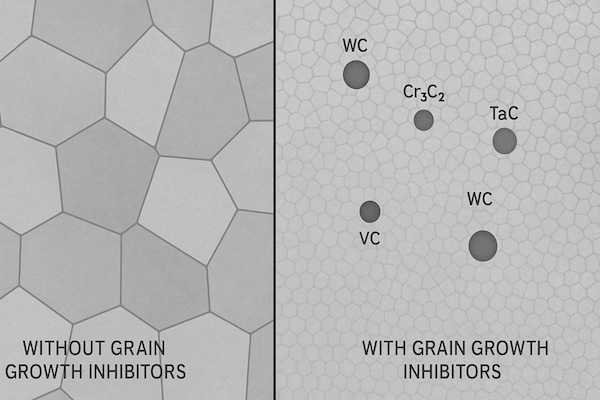
소결 과정에서 WC 입자는 자연스럽게 성장하는 경향이 있습니다. 과도한 성장을 방지하고 원하는 특성을 유지하기 위해 제조업체는 종종 다음과 같은 입자 성장 억제제를 첨가합니다.
바나듐 카바이드(VC)
크롬 카바이드(Cr₃C₂)
탄탈륨 카바이드(TaC)
이러한 첨가제는 미세구조를 안정화하고 극한의 기계 가공 또는 절삭 조건에서도 성능의 일관성을 유지하는 데 도움이 됩니다.
결론
육안으로는 입자 크기가 보이지 않을 수 있지만 그 영향은 다음과 같습니다. 텅스텐 카바이드 도구 심오한 의미가 있습니다. 초정밀 마이크로 드릴부터 견고한 채굴용 곡괭이까지, 적절한 입자 크기를 선택하는 것은 경도, 인성, 내마모성 간의 완벽한 균형을 이루는 데 필수적입니다.
입자 크기를 이해하는 것은 과학자들만을 위한 것이 아닙니다. 이는 도구 성능을 최적화하고 현장에서 더 긴 사용 수명을 보장하는 데 중요합니다.

